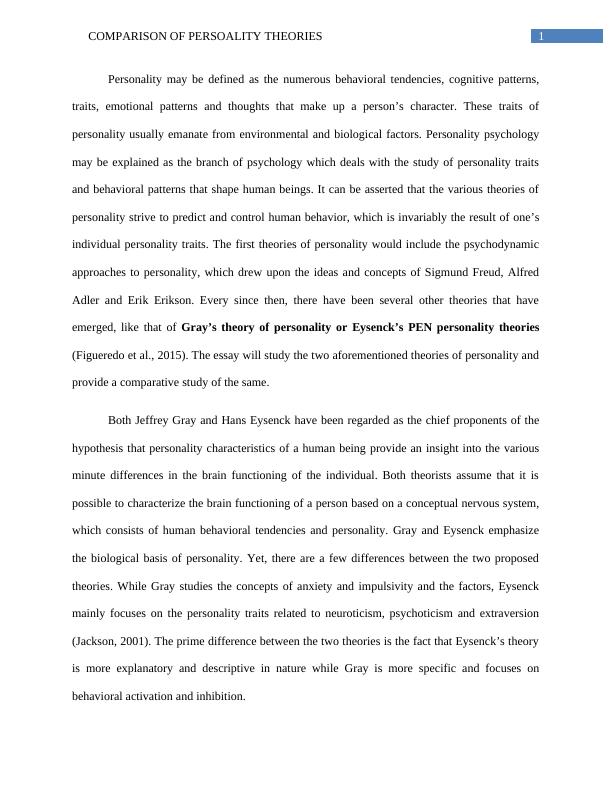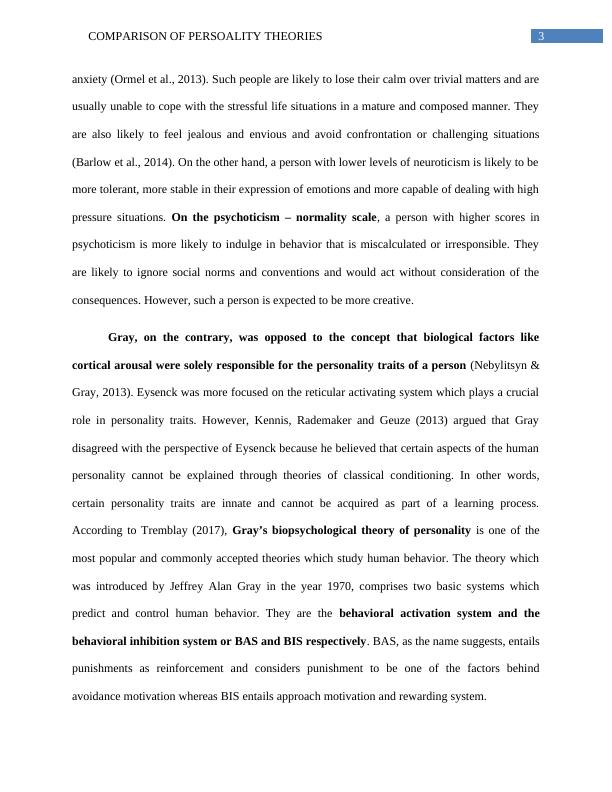Comparison of Personality Theories
Assessment 1 for the course PSYC231 Personality is a multiple choice test worth 20% of the overall mark. The test will consist of 30 questions and will be completed in class during the tutorial sessions. The questions will be based on the relevant readings and lectures. Assessment 2 is a presentation and communication skills assessment worth 15% of the overall mark. The criteria for assessment include language and basics, evidence of research, and content.
Added on 2023-06-04
About This Document
Comparison of Personality Theories
Assessment 1 for the course PSYC231 Personality is a multiple choice test worth 20% of the overall mark. The test will consist of 30 questions and will be completed in class during the tutorial sessions. The questions will be based on the relevant readings and lectures. Assessment 2 is a presentation and communication skills assessment worth 15% of the overall mark. The criteria for assessment include language and basics, evidence of research, and content.
Added on 2023-06-04
End of preview
Want to access all the pages? Upload your documents or become a member.




